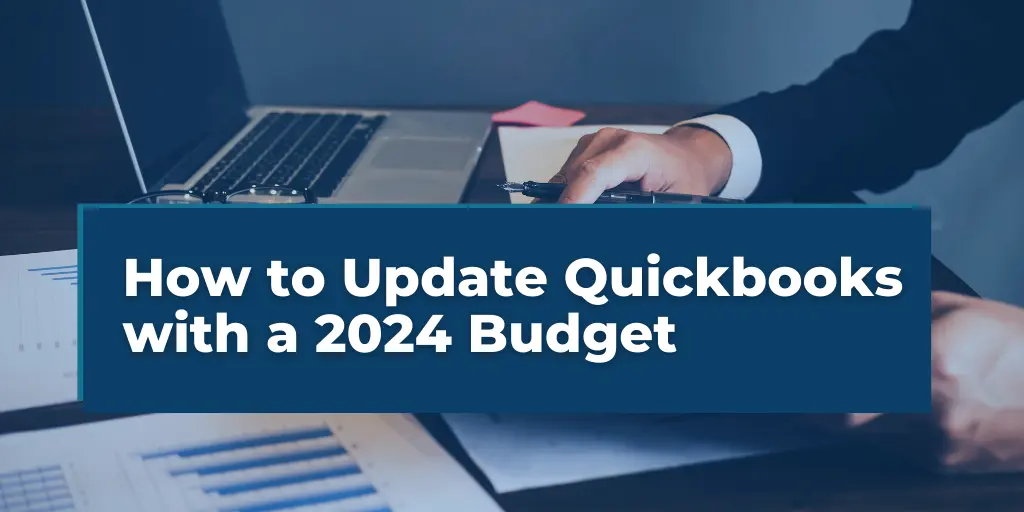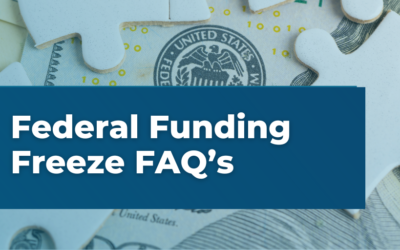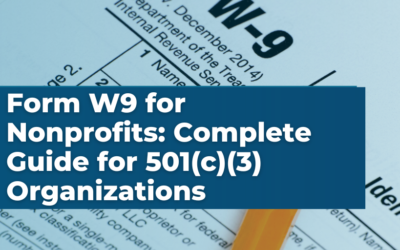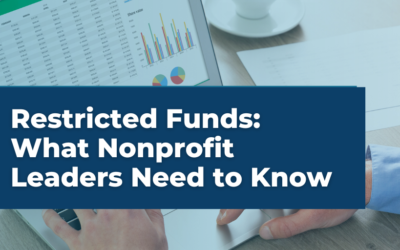Budget management is a cornerstone of nonprofit organization success. It not only ensures financial stability but also aligns spending with the mission and objectives of the organization. As we enter 2024, updating your budget in QuickBooks is crucial to maintain this alignment and ensure efficient financial tracking.
QuickBooks, renowned for its user-friendly interface and comprehensive features, is an indispensable tool for nonprofit accounting. It simplifies the complex task of financial management, allowing organizations to focus more on their core mission. This article aims to guide you through the process of updating your QuickBooks with a 2024 budget, tailored specifically for the unique needs of nonprofit organizations. Whether you’re a seasoned QuickBooks user or new to the software, these steps will help streamline your budgeting process for the upcoming year.
Understanding the Nonprofit’s Budgeting Needs
Budgeting for nonprofit organizations is distinct, focusing primarily on mission fulfillment rather than profit generation. This mission-centric approach directly influences how budgets are structured and managed. Key considerations include:
- Mission-Driven Budgeting: Allocate funds in a way that directly supports the organization’s core mission and objectives, ensuring that each expense contributes to program success and outreach activities.
- Managing Variable Funding: Nonprofits often depend on fluctuating sources like grants and donations. Budgets should be flexible to accommodate these variations while maintaining financial stability.
- Cost Allocation and Transparency: Accurately distributing costs across various programs is vital for transparency and efficiency, helping meet donor expectations and regulatory requirements.
- Compliance and Adaptability: Nonprofits must comply with specific financial regulations. Budgets should be adaptable, allowing for adjustments in response to changing funding scenarios or organizational needs.
Understanding these aspects is crucial for effective nonprofit budgeting. The next section will guide you through setting up a budget in QuickBooks that aligns with these unique nonprofit requirements.
Setting Up Your Budget in QuickBooks
QuickBooks provides a user-friendly platform for setting up and managing your nonprofit’s budget. Here’s a step-by-step guide to get you started:
- Accessing the Budgeting Tool:
- Open QuickBooks and go to the ‘Company’ menu.
- Select ‘Planning & Budgeting’ and then ‘Set Up Budgets’.
- Creating a New Budget:
- In the ‘Set Up Budgets’ window, click on ‘Create New Budget’.
- Specify the fiscal year for the budget (2024 in this case).
- Choosing Budget Type:
- Select whether you want to create a ‘Profit and Loss’ or ‘Balance Sheet’ budget.
- For most nonprofits, a ‘Profit and Loss’ budget is more relevant.
- Inputting Budget Data:
- Enter your budget figures for each account.
- If you have historical data from the previous year, QuickBooks can use it as a reference.
- Reviewing and Adjusting:
- Carefully review each entered figure for accuracy.
- Make any necessary adjustments based on your nonprofit’s projected income and expenses for 2024.
- Saving Your Budget:
- Once you’ve input all data and reviewed it, save your budget.
- QuickBooks allows you to revisit and revise the budget as needed.
Tips for Accurate Data Entry:
- Double-Check Figures: Always double-check your figures to minimize errors.
- Consistent Categorization: Ensure consistency in how expenses and income are categorized, aligning them with your nonprofit’s financial structure.
- Use Historical Data: If available, use historical data as a guide but adjust for expected changes in the coming year.
- Regular Updates: Budgets are not set in stone. Update them regularly as financial situations change.
Customizing Budget Categories for Nonprofits
Customizing your budget categories in QuickBooks is essential to accurately reflect the unique financial operations of your nonprofit. Here’s how you can tailor these categories to your needs:
- Accessing Chart of Accounts:
- Navigate to the ‘Lists’ menu and select ‘Chart of Accounts’.
- This is where you can view and modify your income and expense categories.
- Adding or Modifying Categories:
- To add a new account, right-click in the Chart of Accounts window and select ‘New’.
- For modifying an existing account, right-click on it and choose ‘Edit Account’.
- Setting Up Specific Nonprofit Categories:
- Customize categories to mirror your nonprofit’s operations, such as specific programs, fundraising events, or administrative costs.
- Create separate categories for different funding sources like grants, donations, and membership fees.
- Tracking Grants and Donations:
- It’s crucial to track grants and donations separately.
- Create distinct categories for each grant and major donations to monitor their usage and reporting separately.
- Ensuring Compliance:
- Ensure that your categorization aligns with nonprofit accounting standards and reporting requirements.
- This makes it easier to prepare financial statements and comply with donor restrictions and reporting guidelines.
Key Considerations:
- Detail-Oriented: Be as specific as possible with your categories for more precise tracking and reporting.
- Consistency: Maintain consistent categorization across budgeting and accounting practices.
- Regular Review: Periodically review and update categories to reflect changes in operations or funding sources.
By customizing your budget categories in QuickBooks, you can gain a clearer understanding of how funds are allocated and used. This tailored approach helps in making informed financial decisions and demonstrating accountability to stakeholders.
Entering the 2024 Budget into QuickBooks
Once you’ve customized your budget categories, the next step is to enter your 2024 budget figures into QuickBooks. Here’s a detailed guide to help you do this accurately:
- Navigating to the Budget Window:
- Go to the ‘Company’ menu, select ‘Planning & Budgeting’, and then ‘Set Up Budgets’.
- Selecting the Right Budget:
- Choose the budget for the 2024 fiscal year that you’ve created.
- Entering Budget Figures:
- For each category in your budget, enter the projected amounts for 2024.
- You can input figures monthly or annually, depending on your preference.
- Using Last Year’s Data (Optional):
- If applicable, use the previous year’s actuals as a guide. QuickBooks can prefill these for comparison.
- Adjusting for Nonprofit Specifics:
- Make adjustments for anticipated changes in income or expenses specific to your nonprofit’s operations.
- Saving the Budget:
- After entering all the data, save the budget.
Tips for Ensuring Data Accuracy:
- Cross-Reference with Financial Plans: Ensure that the figures entered align with your organization’s financial plans and projections.
- Regular Review and Adjustments: Continuously revisit the budget to make necessary adjustments as your financial situation evolves throughout the year.
- Error-Checking: Regularly check for data entry errors. Pay special attention to categories with significant changes from the previous year.
- Utilize QuickBooks Tools: Take advantage of QuickBooks’ budgeting tools and reports for accuracy checks and comparisons.
Entering your 2024 budget accurately is crucial for effective financial management throughout the year. This process not only sets a financial roadmap but also enables you to monitor and adjust your finances as needed.
Monitoring and Adjusting the Budget
A budget is not a static document; it requires regular monitoring and adjustments. QuickBooks offers tools to effectively track and update your budget. Here are strategies to ensure your 2024 budget remains relevant and accurate throughout the year:
- Regular Budget Reviews:
- Schedule monthly or quarterly budget review meetings.
- Compare actual financial performance with the budgeted figures.
- Using QuickBooks Reports:
- Utilize QuickBooks’ reporting features to generate budget vs. actual reports.
- These reports help identify variances between planned and actual income and expenses.
- Analyzing Variances:
- Investigate significant variances to understand their causes.
- Determine whether they are due to one-time events or indicate a trend.
- Making Adjustments:
- Based on your analysis, adjust the budget in QuickBooks.
- This might involve reallocating funds between categories or revising income or expense estimates.
- Documenting Changes:
- Keep a record of why and how the budget was adjusted.
- This documentation is crucial for future reference and accountability.
Tips for Effective Budget Monitoring:
- Stay Proactive: Don’t wait for the fiscal year-end to review your budget. Regular monitoring helps in making timely adjustments.
- Engage Stakeholders: Include key team members in the budget review process for a comprehensive understanding of financial performance.
- Leverage QuickBooks Tools: Explore QuickBooks’ budgeting and reporting tools to simplify analysis and adjustments.
By regularly monitoring and adjusting your budget in QuickBooks, you ensure that your nonprofit’s finances stay aligned with its goals and adapt to changing circumstances.
Integrating the Budget with Other Financial Reports
Integrating your budget with other financial reports in QuickBooks is essential for comprehensive financial oversight. This integration allows for a holistic view of your nonprofit’s financial health and aids in informed decision-making.
- Linking Budget to Financial Reports:
- Ensure your budget is aligned with the Chart of Accounts in QuickBooks. This alignment ensures consistency across all financial reports.
- When you update your budget, these changes should reflect in related financial statements like the Profit and Loss report.
- Consolidated Financial View:
- Use QuickBooks to generate consolidated reports that include budget, actual income, expenses, and forecasts.
- This comprehensive view helps in assessing the organization’s financial position against its budgetary goals.
- Analyzing Trends and Patterns:
- Compare budget figures with historical financial data in QuickBooks.
- Identifying trends and patterns helps in forecasting and planning future budgets.
- Budget as a Benchmarking Tool:
- Use your budget as a benchmark in financial reports to gauge performance.
- This helps in identifying areas of over or under-spending.
- The Importance of an Integrated System:
- An integrated financial system in QuickBooks provides accuracy and saves time.
- It ensures that all financial data is interconnected, reducing the chances of discrepancies.
Benefits of Integration:
- Enhanced Financial Control: Keeps all financial aspects in sync, offering better control and management.
- Improved Reporting Accuracy: Reduces errors and ensures consistency across all financial reports.
- Strategic Decision Making: Facilitates informed decisions based on a comprehensive understanding of financial status.
Integrating your budget with other financial reports in QuickBooks is not just about record-keeping. It’s about creating a financial ecosystem within your organization that supports strategic planning and effective financial management.
Conclusion
Effective budget management in QuickBooks is crucial for the success of any nonprofit organization. It transcends basic accounting, aligning every financial decision with your mission and goals. As we’ve explored, setting up and maintaining a 2024 budget in QuickBooks is essential for transparent and efficient financial management.
In this ever-changing financial landscape, staying adaptable and continually learning are key. And here, Velu, a specialized nonprofit CPA, can be your invaluable partner. With our expertise in accounting and bookkeeping services, we can assist you in not only reviewing and optimizing your QuickBooks setup but also in ensuring that your budgeting practices evolve with your organization’s needs. Velu’s support can bring a new level of insight and efficiency to your financial management, turning your QuickBooks data into a powerful tool for making impactful decisions and realizing your nonprofit’s vision.





